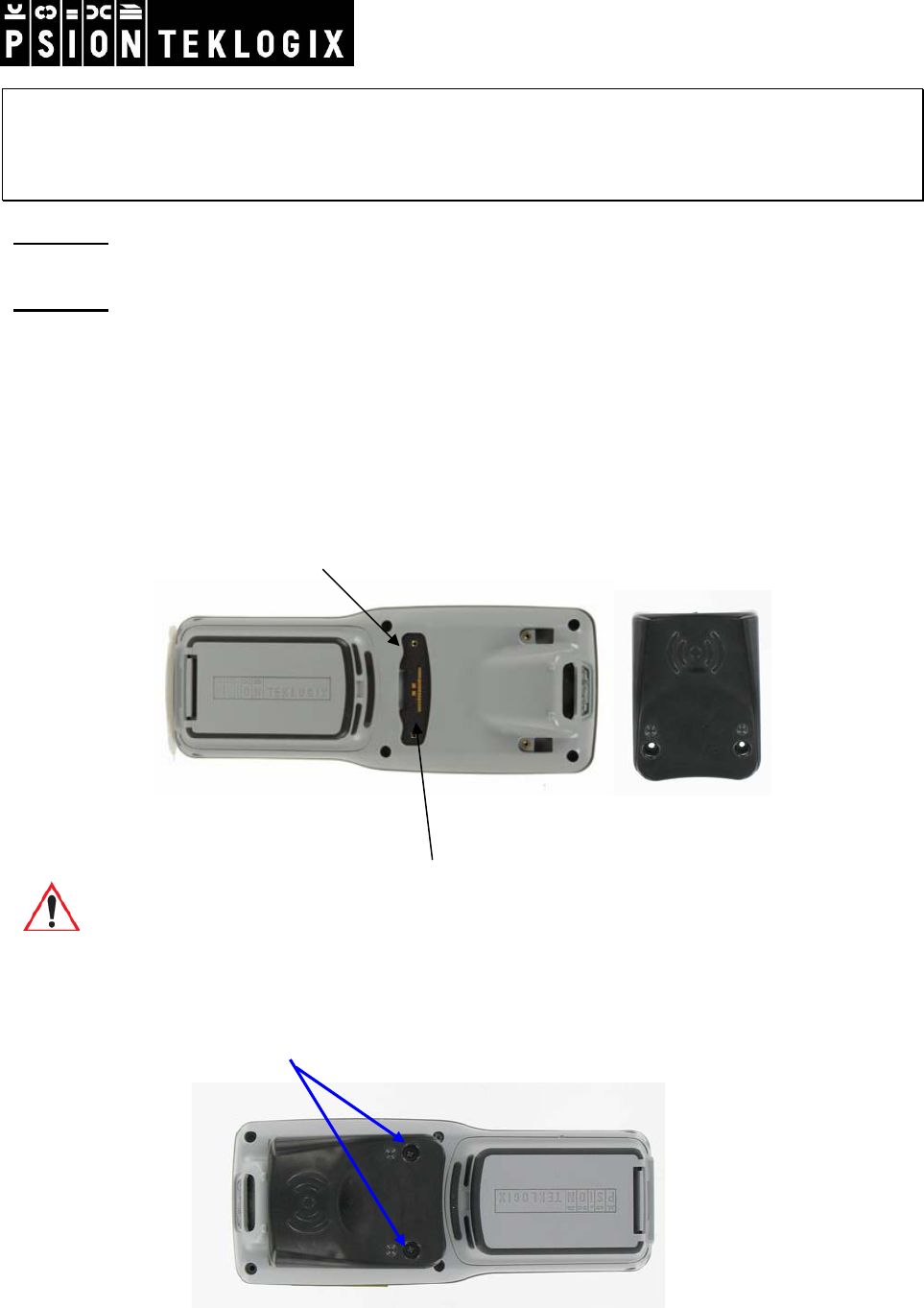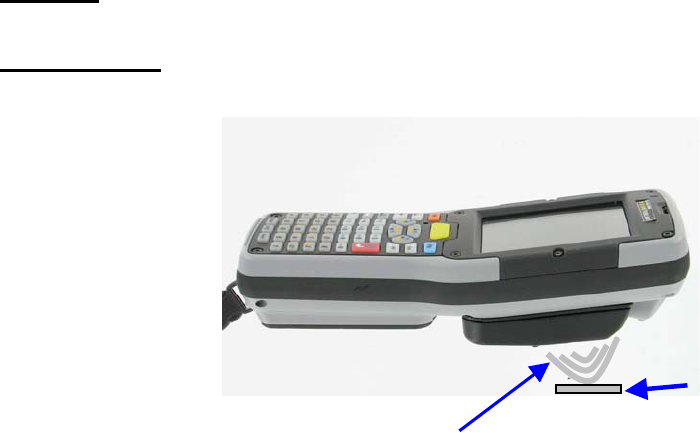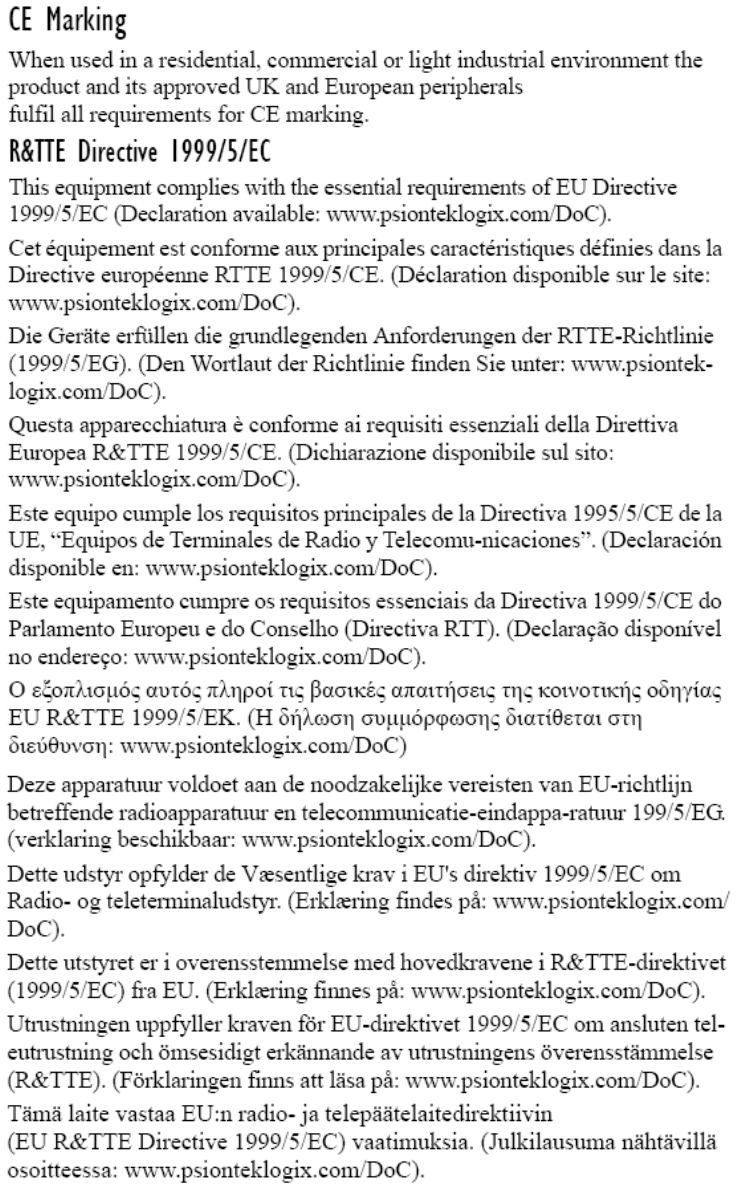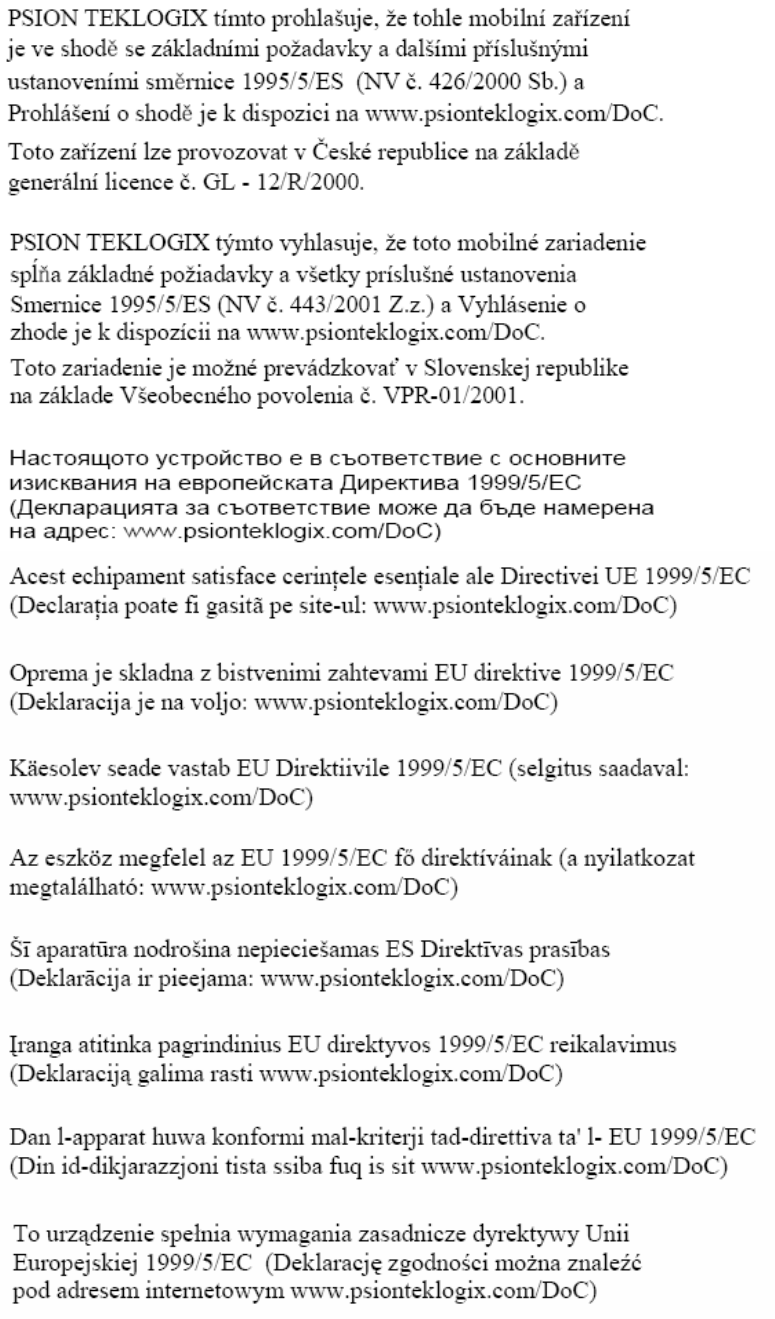Psion HFAM1NEO RFID MODULE HF-AM1-NEO User Manual
Psion Inc RFID MODULE HF-AM1-NEO Users Manual
Psion >
Users Manual

NEO RFID MODULE HF-AM1-NEO
EXPANSION MODULE INSTRUCTIONS
Important: All Approval and safety information is outlined in the ‘NEO™ Handheld Computer User
Manual’– part number 8100157.
Important: The NEO with the RFID option must not be held closer than 20 cm from the rest of the
body. This product must not be used in a holster or on a belt-clip.
Easily installable expansion modules for the NEO allow you to customise this hand-held to meet your
specific mobile computing requirements. This chapter outlines how to install the RFID Module HF-AM1-
NEO.
.
• The RFID Module HF-AM1-NEO is connected by the expansion port
Expansion port
May 14, 2009
DPD A00509 A00 Sheet 1 of 3
NEO Back Pack RFID Device
Important: Remove the expansion port plastic part before a back pack RFID module is being
installed.
• Screw the RFID Back Pack with M2 X 8 screws on the NEO.
For detailed instructions, pleased refer to NEO Handheld Computer User Manual and to the RFID
MODULE HF-AM1-NEO User manual.

Important: The NEO PDA with the RFID option must not be held closer than 20 cm from the rest of
the body. This product must not be used in a holster or on a belt-clip.
READING AREA:
This area depends on the TAG type, TAG packaging, TAG position and environment (metallic or not).
TAG
Reading Area
May 14, 2009
DPD A00509 A00 Sheet 2 of 3

NEO RFID MODULE HF-AM1-NEO
RFID Regulatory Information
IMPORTANT NOTE FOR NORTH AMERICA:
The RFID must not be used whilst the host NEO PDA is being powered by the ac/dc adaptor.
FCC Information to Users:
This product and it antennas must not be co-located or operated in conjunction with any other antenna or
transmitter.
Radiation Exposure Compliance
This product complies with the FCC RF exposure limits for an uncontrolled environment. For continued
compliance, the product must not be held closer than 20 cm from the rest of the body. This product must
not be used in a holster or on a belt-clip.
Federal Communication Commission Interference Statement.
This equipment has been tested and found to comply with the limits for a Class B digital device, pursuant to Part
15 of the FCC Rules.
These limits are designed to provide reasonable protection against harmful interference in a residential
installation. This equipment generates, uses and can radiate radio frequency energy and, if not installed and used
in accordance with the instructions, may cause harmful interference to radio communications. However, there is
no guarantee that interference will not occur in a particular installation.
If this equipment does cause harmful interference to radio or television reception, which can be determined by
turning the equipment off and on, the user is encouraged to try to correct the interference by one of the following
measures:
• Reorient or relocate the receiving antenna.
• Increase the separation between the equipment and receiver.
• Connect the equipment into an outlet on a circuit different from that to which the receiver is
connected.
• Consult the dealer or an experienced radio/TV technician for help.
This device complies with Part 15 of the FCC Rules. Operation is subject to the following two conditions: (1) This
device may not cause harmful interference, and (2) this device must accept any interference received, including
interference that may cause undesired operation.
FCC Caution: Any changes or modifications not expressly approved by the party responsible for compliance
could void the user's authority to operate this equipment.
Emissions Information for Canada:
This Class B digital apparatus complies with Canadian ICES-003.
Cet appareil numérique de la classe B est conforme à la norme NMB-003 du Canada.
May 14, 2009
DPD A00509 A00 Sheet 3 of 3

May 14, 2009
DPD A00509 A00 Sheet 4 of 3

May 14, 2009
DPD A00509 A00 Sheet 5 of 3